Reigniting Religion Through the Renaissance — Kellen Howell

It is not easy to be a practicing Roman Catholic in today’s world: the media often wrongly equates religion with political conservatism and scandals in the Catholic Church have rocked the very foundation of Catholicism, tainting my ties to the Church and my own religious participation. For the very same reason that attending a Jesuit-Catholic University for college reconnected me with my faith, I traveled to Italy this summer with the hope that a trip to this beautiful country – specifically the artistic, cultural and religious hubs of Rome and Florence – would reawaken my connection to Catholicism. One of my closest friends from Boston College recently finished her Masters Degree in Theological Studies at Boston College’s School of Theology and Ministry, and I was excited when she agreed to travel with me to Italy: her unique perspective as a self-proclaimed “liberal, feminist Catholic,” as well as her extensive knowledge about Catholicism and the realities of modern-day religion, was indispensable as I reclaimed my understanding of my own spiritual life through the art, culture, and history of Italy.
Much of Italian culture centers around religion, and Rome and Florence in particular have deep-seated roots in Catholicism. For this reason, we decided to bookend our trip in these Catholic meccas, beginning with Florence and ending with Rome. We also added a pit-stop in the Amalfi Coast to rest and recharge between cities.

We began our trip in Florence, birthplace of the Renaissance (which is also linked closely with many elements of Jesuit education). The location of the Duomo as the city center only further solidifies the importance of religion in Florentine culture, and this was all the more evident as we explored the city. Our first stop was the Galleria dell’Accademia, home of Michelangelo’s David and other Renaissance art and musical instruments. I was shocked by the sheer size of the David and impressed at the sculptor’s ability to translate such realistic emotion to the face of David without a true living, breathing subject.
Our second stop was the Duomo, climbing over 463 steps to reach the top for a spectacular 360-degree view of the city. Later in the week we would attend daily mass here, which was my first time attending mass in over a year. “Daily mass” is a shortened version of weekend masses, with one reading instead of two before the Gospel and a shortened homily (i.e. the “sermon” or talk that the priest gives after the Gospel). There were about twelve people in attendance at daily mass, over half of whom were nuns. When the priest entered the small side chapel the nuns in the front pews began to sing, and I was completely mesmerized by the beauty of their voices as they echoed quietly throughout the Duomo’s interior. Even though all of the masses we attended in Italy were in Italian, I found a sort of peace wash over me sitting in a sacred space and listening to the ebbs and flows of a language other than my own.
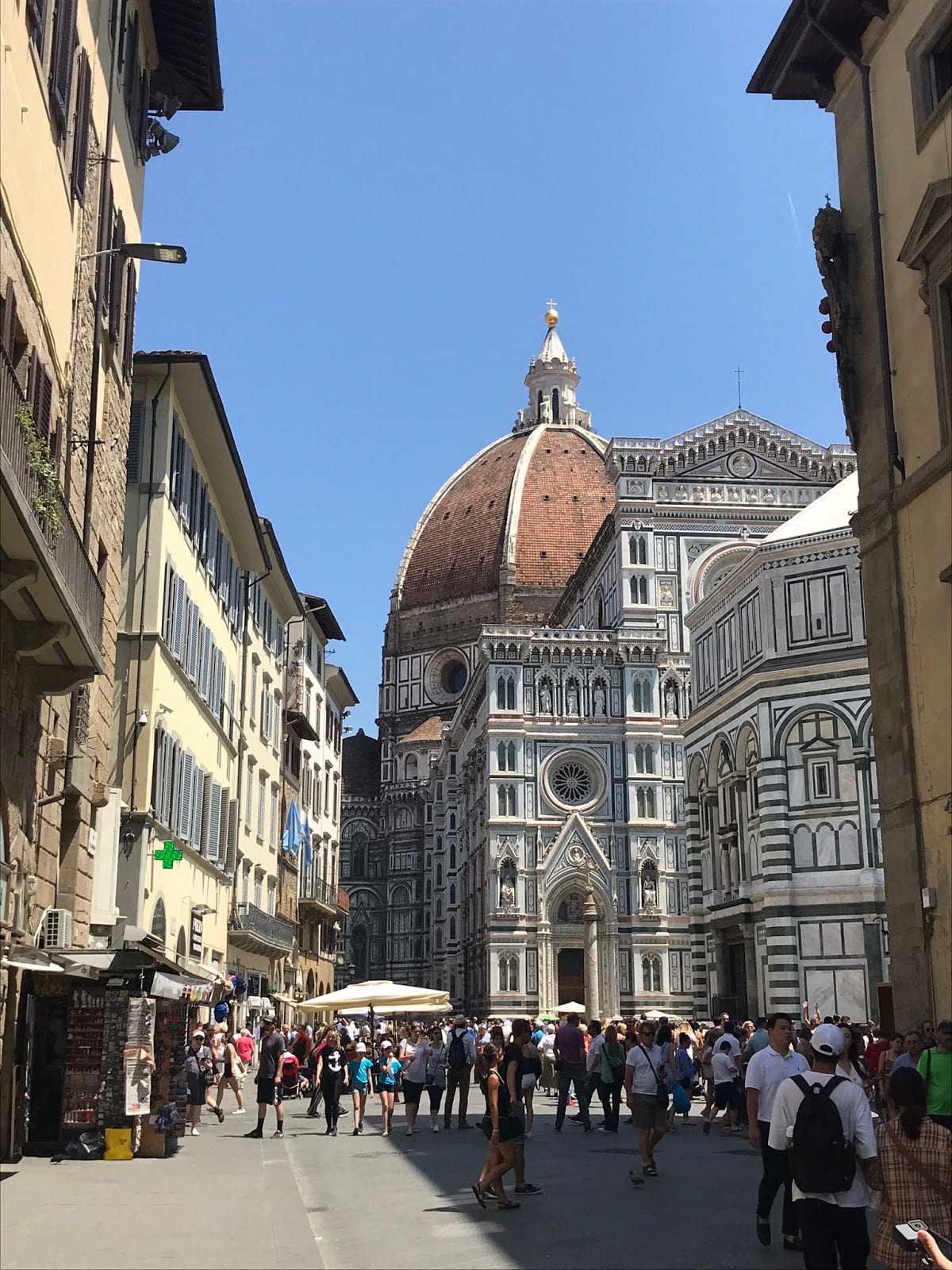


We spent the next few days exploring the Duomo Museum (which houses Michelangelo’s Pieta and the infamous wooden sculpture of Penitent Magdalene by Donatello), the Medici Chapels, and the Uffizi Gallery, home to one of the largest collections of Renaissance art in the world. I particularly loved the Doni Tondo, Michelangelo’s only documented panel painting. The unusual pose of the virgin, along with a few other characteristics, display a “feminist” element in Michelangelo’s work that balks at the religious limitations imposed on women of the time.
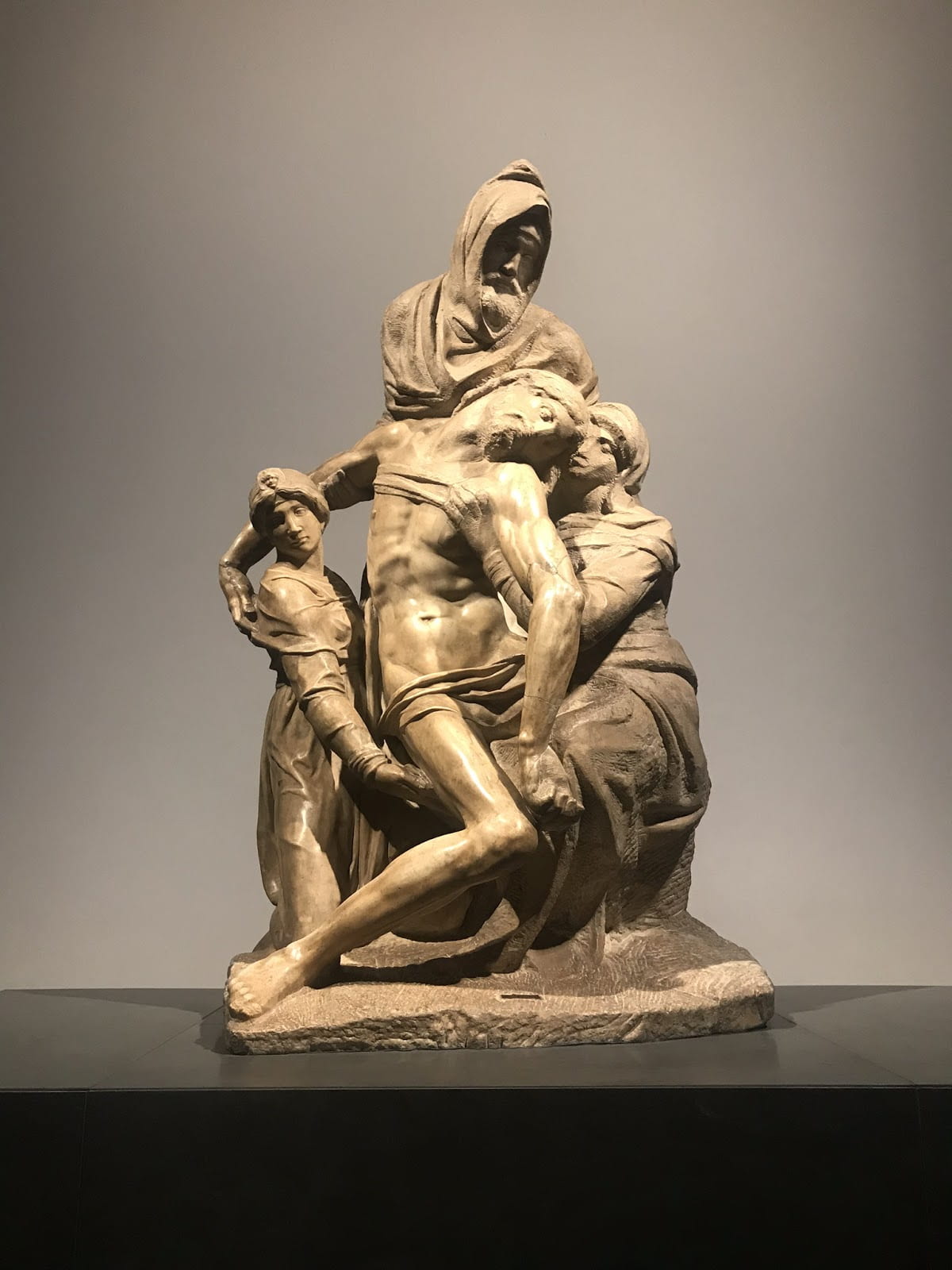


After Florence, the Amalfi Coast gave us a few days to relax and recharge, and of course to indulge in the cuisine for which these seaside towns are best known – seafood! We made our home base in Positano and took a day trip to the island of Capri in between relaxing on the beach and indulging in all things limone, the primary crop of Positano and the Amalfi Coast.

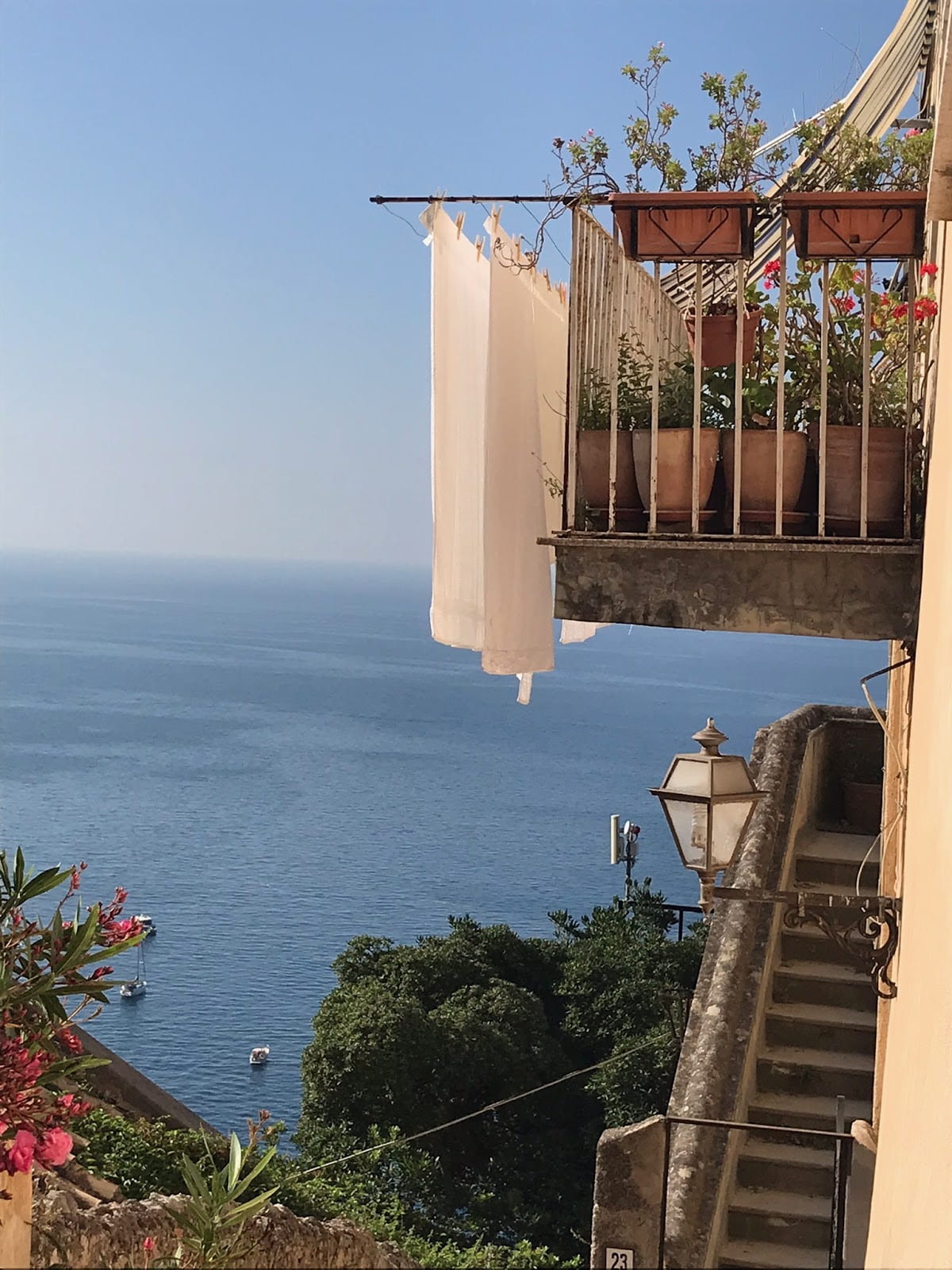
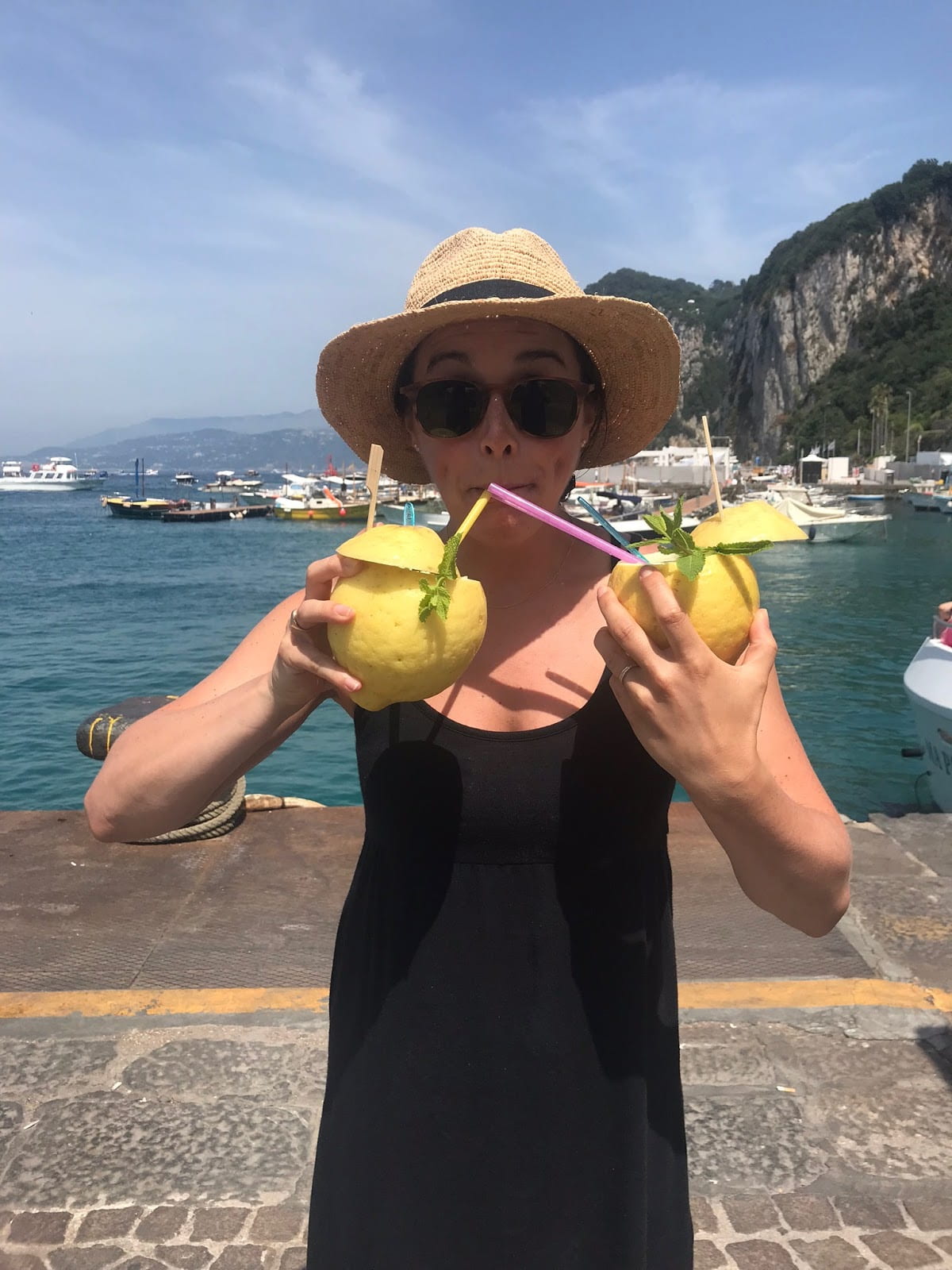
After a few days in Positano, a quick train ride from Naples brought us to Rome, a center of religion and Christian pilgrimage for centuries and home to obvious notable religious icons like the Vatican, St. Peter’s Basilica and the Sistine Chapel. There are over nine-hundred churches in the city alone, and while we certainly made time for the major sites we reserved much of our days simply to wander into some of the lesser-known churches, many of which contain works by well-known artists and sculptors like Caravaggio and Bernini.
We began our week with a 5:30 PM Sunday Mass at Basilica di Santa Maria in Trastevere. This was the perfect church “appetizer”, as its gorgeous frescoes, mosaics and detailed sculptures were a preview of what was to come, even in many of the less-often visited churches. While I was somewhat distracted by the tourists that were allowed to wander into the back of the church during mass, I was also humbled by moments of pure beauty and grace: an older man crying during communion, the two women sitting behind us who harmonized perfectly with every hymn, and the homeless patron who was greeted like an old friend by the Sacristan.

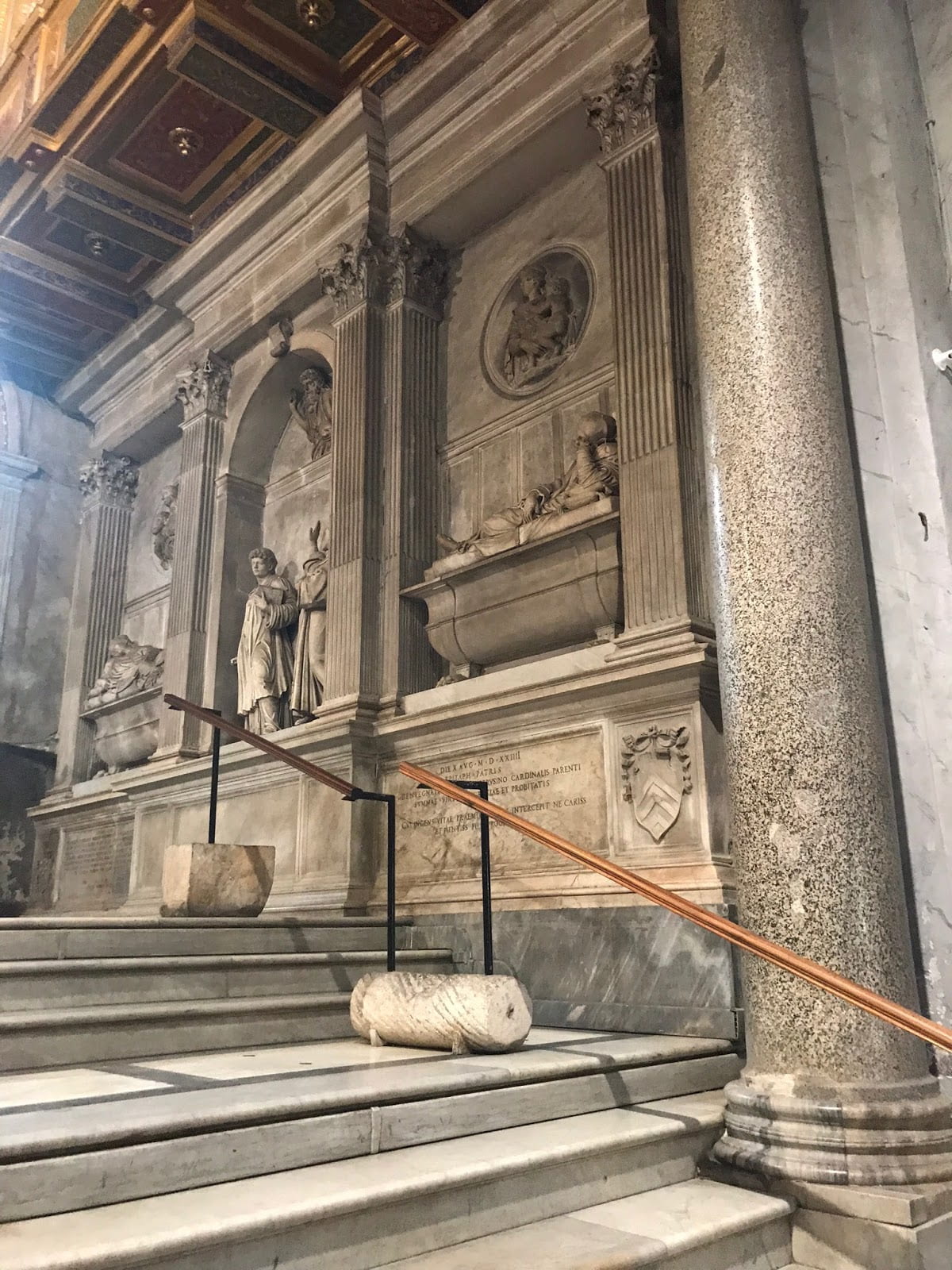
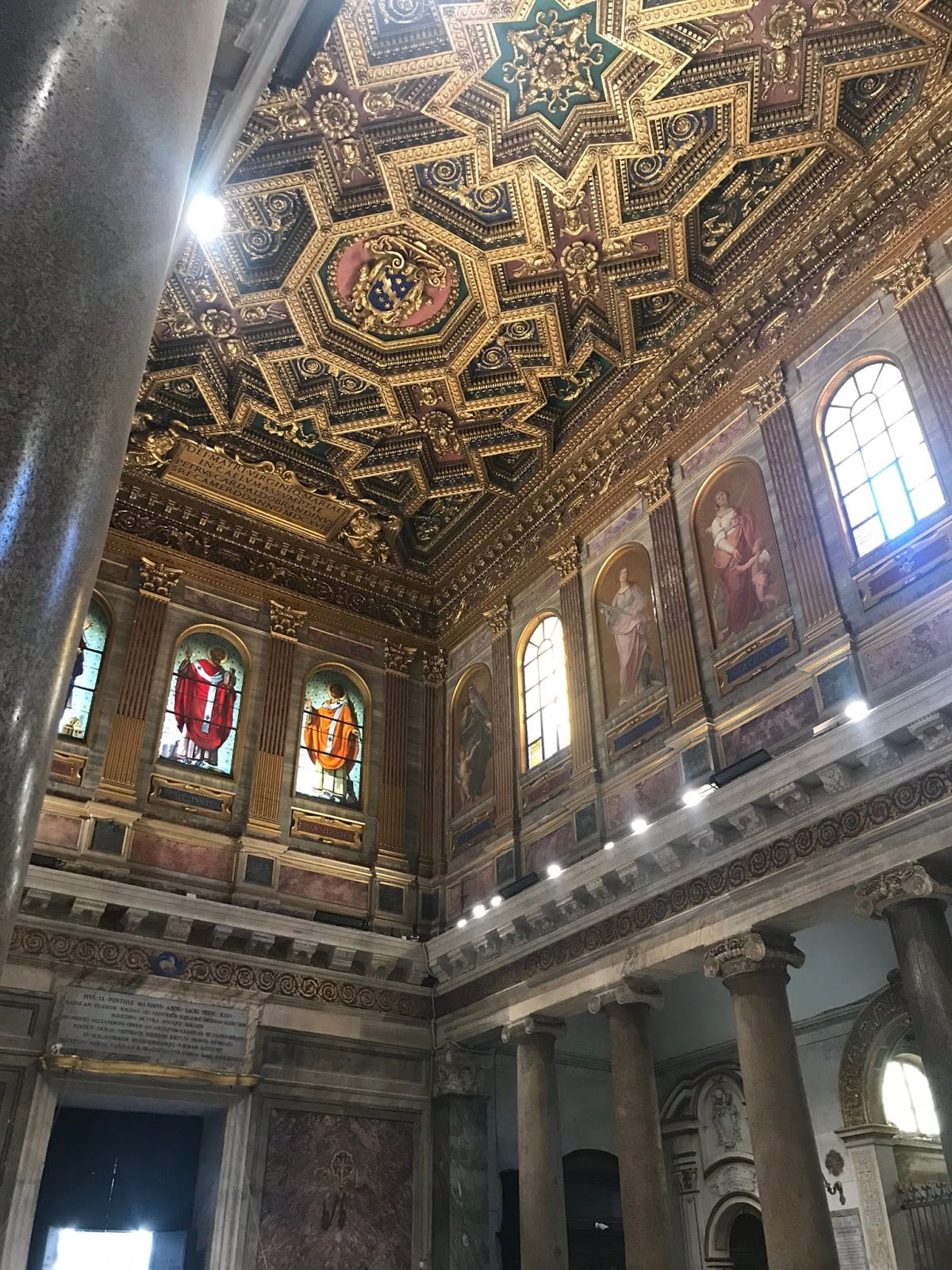
We spent the majority of Monday visiting St Peter’s Basilica and touring the Vatican Museum. One of my favorite moments from St. Peter’s Basilica came when we visited the Room of the Blessed Sacrament, which was off-limits for pictures and reserved only for those who wanted a moment of solitude to pray. As we turned to exit I saw a man performing Salah, the Muslim act of worship, in the back of the room. This felt like such a reaffirming moment in a world so politically divided by religion and belief systems – a moment in which a church, just like any house of worship in any religion, should be a welcoming space for all.

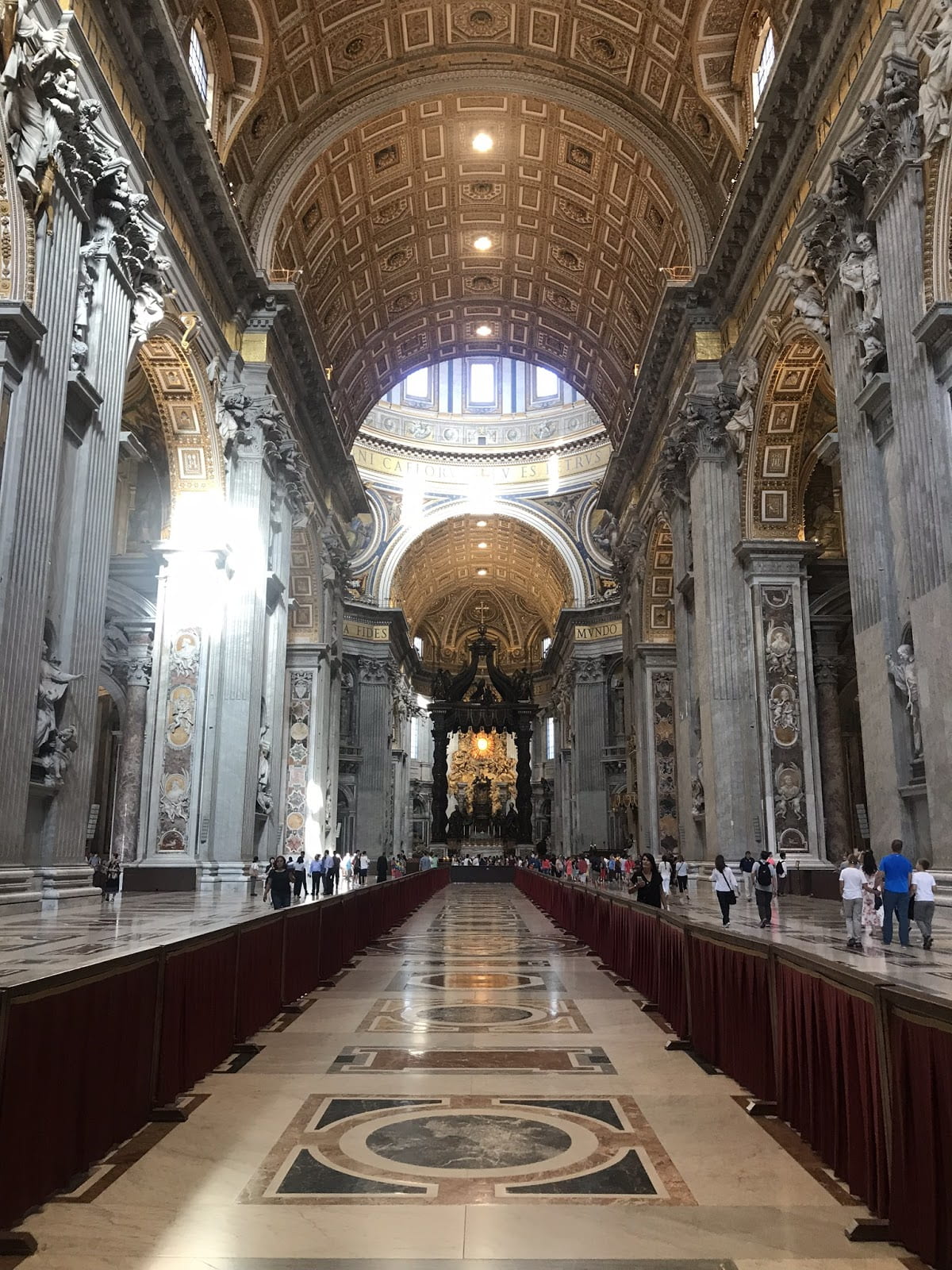
The Vatican Museum, although overwhelming both in terms of its sheer size, the crowds, and the lack of air-conditioning, was fascinating. The Raphael Rooms in particular, which originally formed a suite of reception rooms in the Papal Apartments, was my favorite. His work The School of Athens highlighted what has always attracted me to Jesuit Catholics and the Jesuit perspective of education – that religion was never meant to be mutually exclusive, and that we as a human race must balance faith and reason, theology and philosophy, schools of academia and the church (or religion for non-Catholics). The fact that this room was where the Pope once entertained guests exemplifies that he shared this same belief as well (fun fact: Pope Francis is also the first Jesuit pope!).
Our visit to the Vatican Museum concluded with time in the Sistine Chapel. Despite the fact that the majority of Renaissance art held religious significance, I was pleasantly shocked by artists like Michelangelo and Raphael who were able to exert artistic freedom and inject humor into their work. For example, when the Pope’s Master of Ceremonies expressed disgust that Michelangelo had painted so many nude figures on the ceiling of the Sistine Chapel, Michelangelo painted the man’s likeness into the scene as the grotesque judge of the underworld, Minos! The artist also painted his own self-portrait on the flayed skin held by St. Bartholomew, harkening to the figure of speech of the time, “I left my skin on it,” meaning that Michaelangelo gave everything he had to the painting.
The following morning we initiated a self-designed “church crawl,” visiting a number of lesser-known churches housing surprisingly well-known works. A few of these included:
- San Giovanni dei Fiorentini
- San Luigi dei Francesi (home of a Caravaggio triptych, including The Calling of St.
- Matthew, which is arguably his best work)
- St. Maria Sopra Minerva (which houses St. Catherine of Siena’s body)
- Chiesa di Sant’Ignazio di Loyola (the “dome” inside the church is actually a painted illusion)
- Cornaro Chapel (home to Bernini’s Ecstasy of St. Theresa, based on a passage by St. Theresa of Avila that’s actually quite controversial!)
Some of these churches had Renaissance music playing from speakers when we entered. The combination of these three prominent elements of the Renaissance (art, music, and religion), when witnessed all at once in the same space, made me feel as though I had been transported back to the 1500s. I can understand how easy it was to be inspired in the time of the Renaissance!
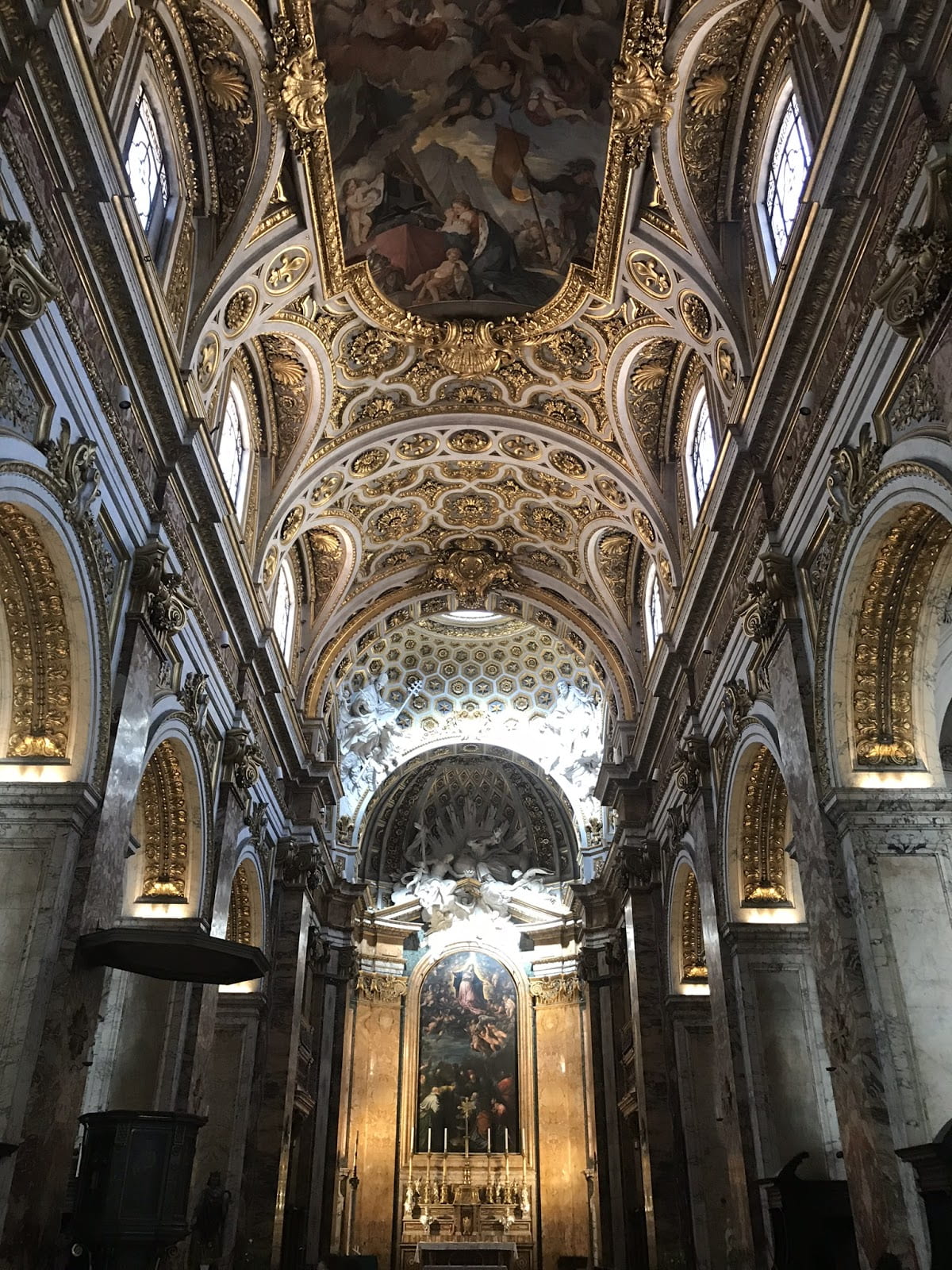


With some advance planning and luck, we were able to score tickets to the Papal Audience on Wednesday, a weekly gathering where the Pope greets the crowds in the “Popemobile” and offers prayers, blessings, and a homily (it is not a mass). Although extremely crowded (and hot!), it was fun to see the Pope and witness his generosity, particularly to the young, the poor and the sick.


One of our last artistic endeavors was the Galleria Borghese, an art gallery housed in the former Villa Borghese and surrounded by gorgeous, lush gardens (think: the Central Park of Rome). Some of the standout pieces included a number of Caravaggio paintings, which were initially criticized for their stark naturalism and the realistic features of figures like Mary and Jesus. While it is now speculated that these depictions were meant to display Caravaggio’s religious fervor and not disrespect, I also appreciated that the artist seemed desperate to make these religious figures seem both tangible and relatable to its viewers.
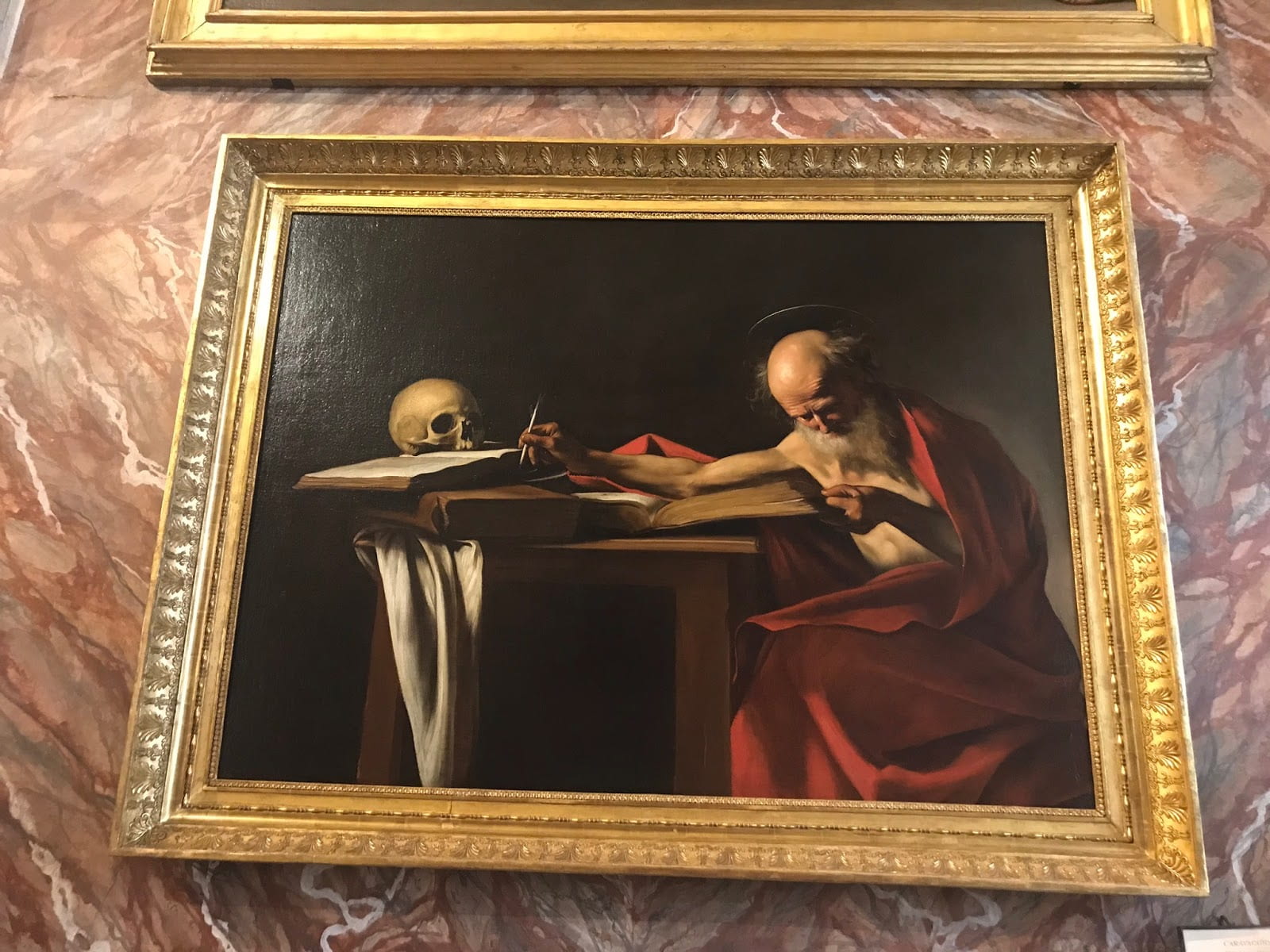
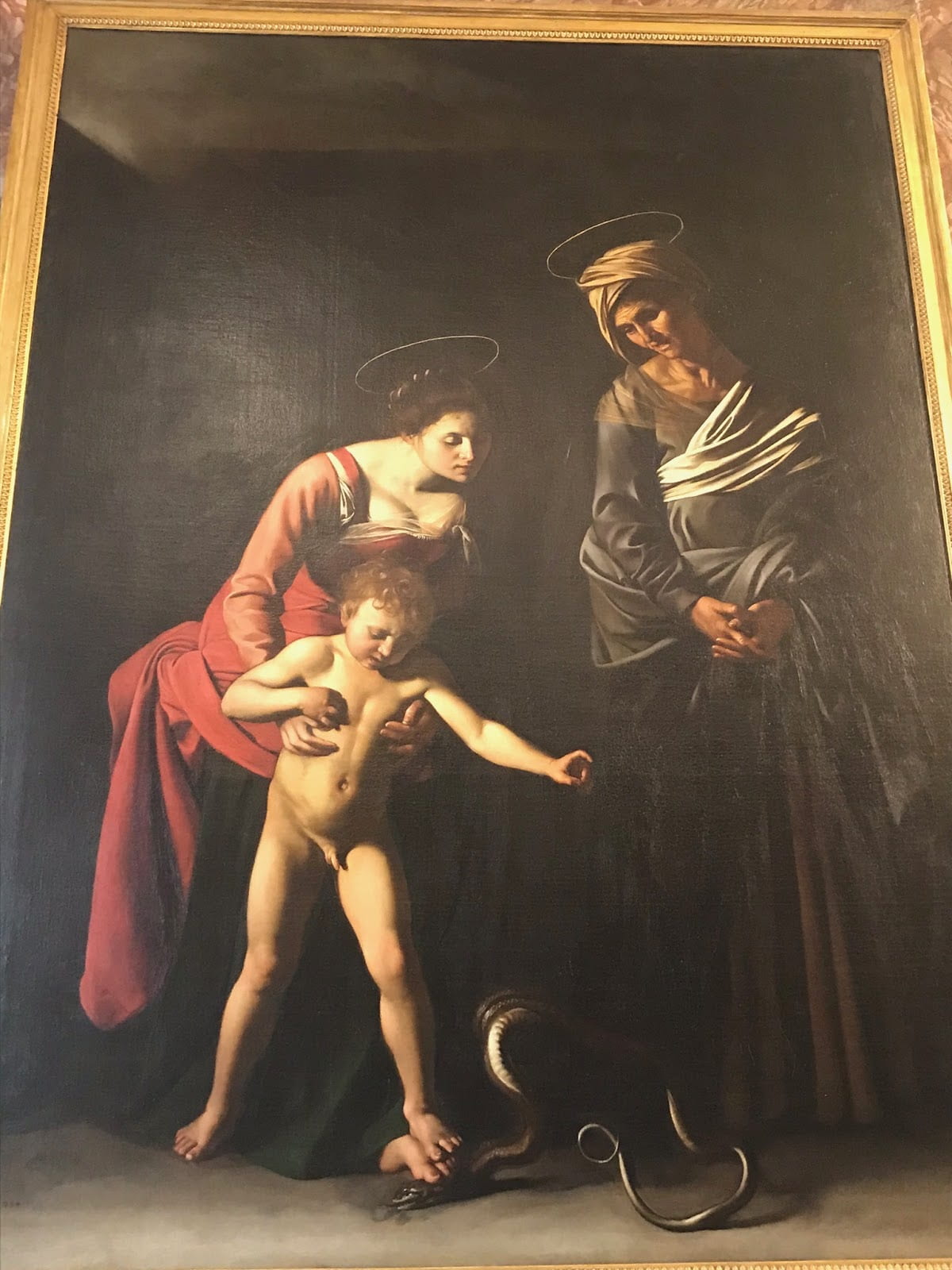
A trip to Rome wouldn’t be complete without a visit to the Colosseum, Palantine Hill, the Forum and the Pantheon, so we sprinkled these elements of Ancient Rome throughout our trip as well.


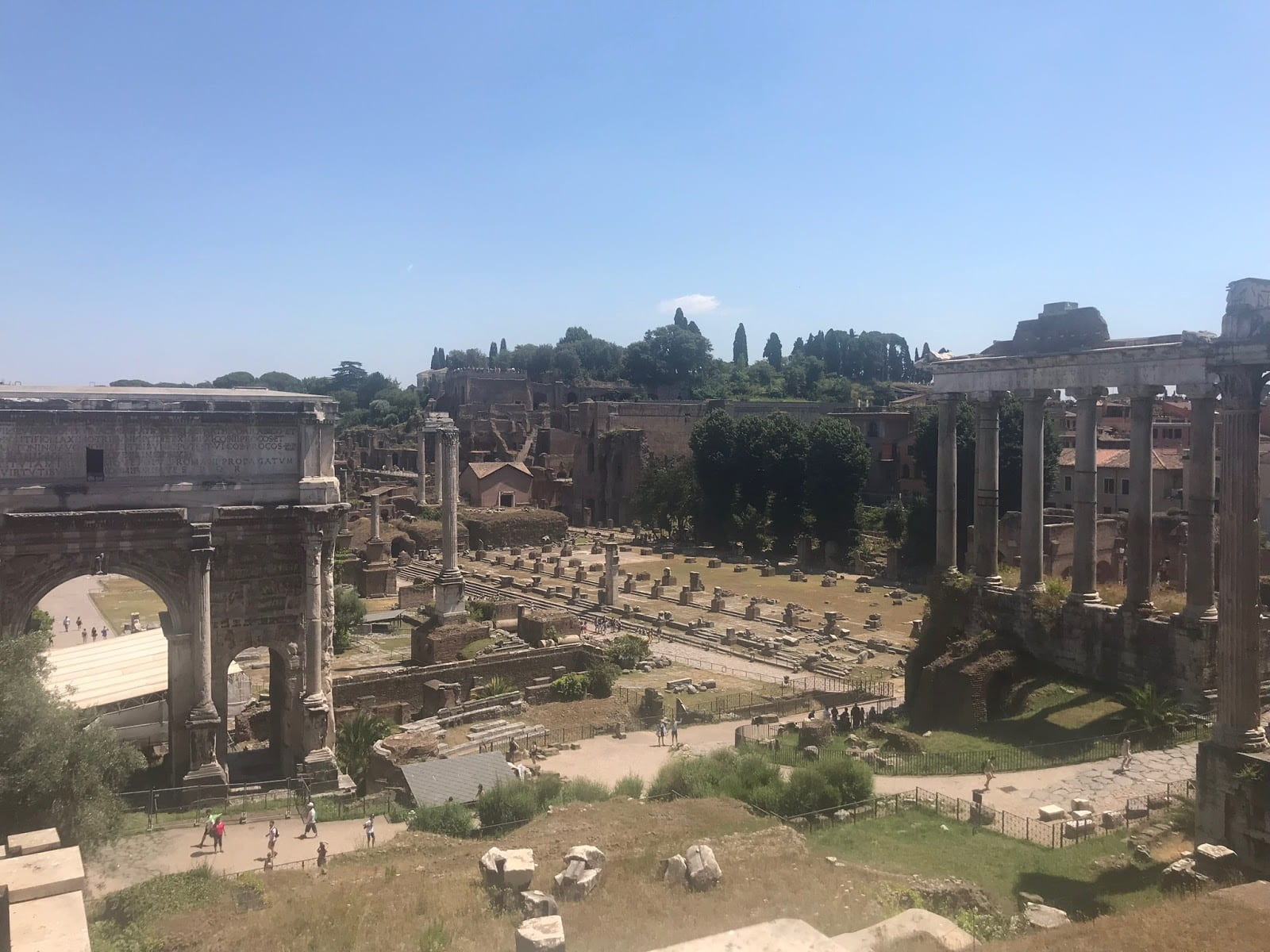

In short, it is no surprise that Catholicism is a religion and practice still surrounded by beauty in countries like Italy. Certainly, some of the dualities of Catholicism in Italy are off-putting: religion as a tourist attraction, even in sacred moments of worship; the simultaneous glorification of religious women like Mary and yet the strict church dress codes that do not apply to men. However, Italy reminded me that there is still a beauty and a sacredness around Catholicism that lives on, despite its obvious pitfalls. It is this beauty and the peace that comes with moments of solitude (whether in prayer or not) that drew me to engaging more deeply with Catholicism in college, and Italy reminded me that this religion that is also deeply rooted in our world’s history. It is through Catholicism that we discovered some of our most beautiful pieces of art and music, and schools of Academia in Rome and Florence were able to embrace reason, philosophy, and truth all while still appreciating religion and holding strong to a deeper faith. By embracing the elements of Catholicism that suit my interests and needs, I can see the underlying beauty of a religion reborn amidst the art and history of the Italian Renaissance, and embrace the small ways in which I can celebrate being a liberal, practicing Catholic in today’s modern world.